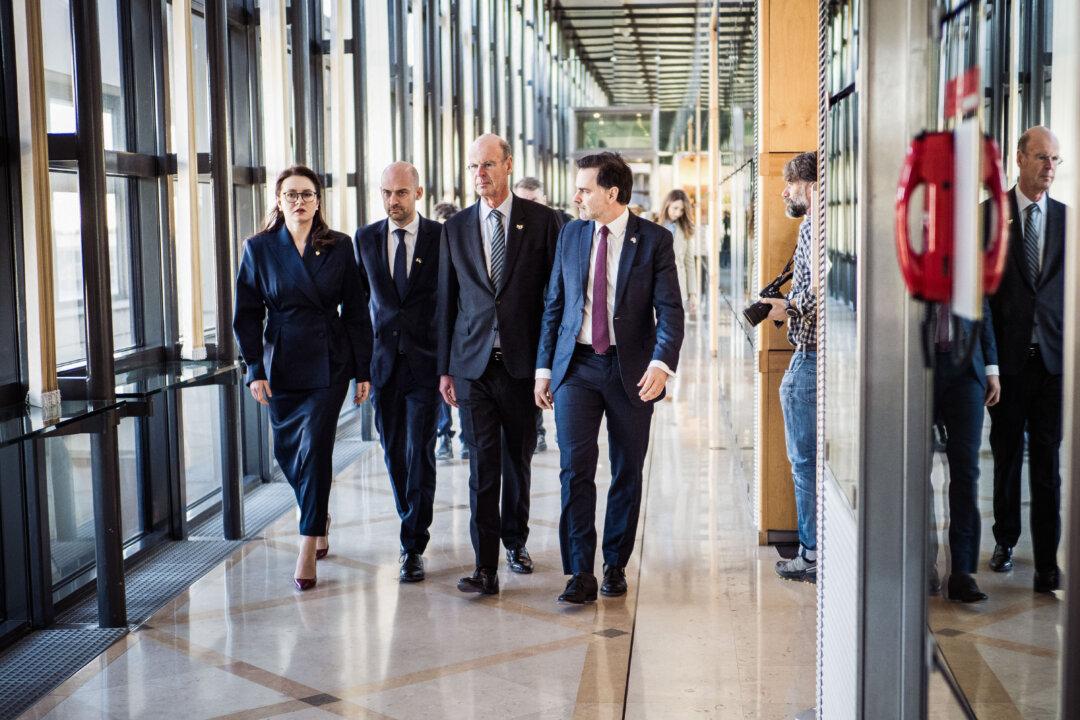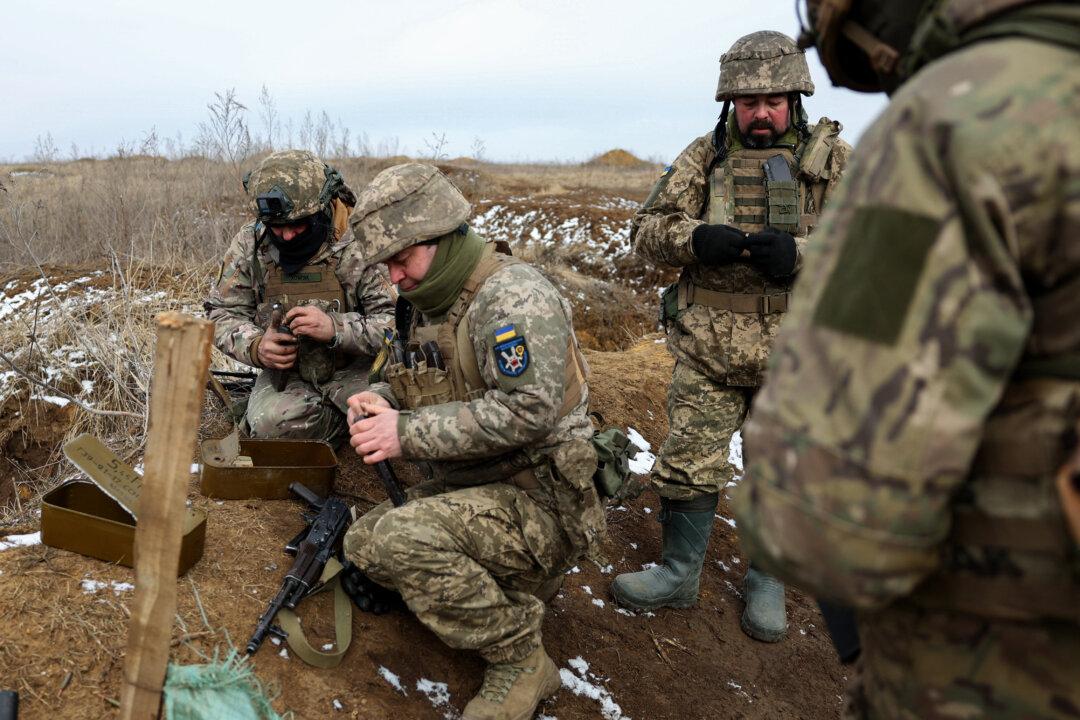Having conducted over 2,000 aerial incursions into Taiwan’s air defense identification zone (ADIZ) since August 2000 and two simulated air-sea strikes on Taiwan and now Japan this year, Chinese leader Xi Jinping has clearly signaled his aggressive intentions. It is time to take his threats seriously and prepare accordingly.
The key is to make an honest assessment of the People’s Liberation Army’s (PLA) capabilities against that of its likely future victims. Those who believe the PLA is not ready for modern warfare ignore three points: the PLA will be fighting closer to home; the PLA has the capacity to inflict heavy losses; America’s technological edge has eroded, if not disappeared.
The latter two points pose the most critical questions Americans should ask: Are we ready for a state-on-state fight with a technologically advanced, near-peer opponent?
The answer involves more than just the military. It is political as well since such wars tend to be costly, messy, and accompanied by high casualties. Americans have grown accustomed to the wars being distant, almost sanitary. That won’t be the case if the next war in Asia comes courtesy of a hostile China. That makes deterring Chinese aggression critical to U.S. national security policy in Asia.
Preventing that war necessitates convincing Xi that the United States has the political will and the capability to deny him victory. The Chinese Communist Party (CCP) places great importance on its own and an enemy’s political will. For the former, it constricts the Chinese people’s access to “external, potentially damaging outside information sources,” censors social media content, and suppresses views contrary to CCP doctrine. It also uses its long-running tactic of public shaming (personally devastating, especially in Asian cultures) and, more recently, restricted social “credit.” This new tactic undermines banking access and employment opportunities against those who call for greater freedoms, expose corruption or criticize the party, its actions, or its policies. Xi uses advanced information technology (IT) systems to amplify new levels of detail in Mao Zedong’s totalitarian practices against both imagined and real domestic opposition. It has proven profitable for him, China’s Public Security Bureau, and some unwitting Western IT companies.
Meanwhile, China’s cyber warriors and United Front Work Department are working to exacerbate internal divisions in the United States, quietly facilitating the existing efforts of America’s media and political elites of both parties. The FBI and others have warned of Chinese meddling in the midterm elections. Partisan commentators believe the meddling favors their political opponents, but that is not China’s or any of our other enemies’ intent. Their goal is to undermine, if not destroy, American confidence in its democracy. They are waging tactical battles in information warfare, planting the seeds of intrigue and expecting our political elites to enlarge the existing fissures in their ongoing battle to win political points with their respective bases. The tactics seem to work as the gap in discourse and consensual collaboration among our political interests widens. It needs to end.

A country divided internally is not likely to remain united behind a distant war. Chinese leaders note that America’s political divisions over Vietnam contributed to Hanoi’s victory in that conflict. U.S. leaders should remember that as well. One does not heal divisions by castigating those who supported one’s opponent. Achieving political unity or at least reducing disunity is what responsible leaders do, and in so doing, it will strengthen America’s deterrence against aggressors.
Economically, both China and the United States have a massive public debt problem and face economic challenges. China’s COVID-19 lockdowns, credit market challenges, and growing bankruptcies in the real estate sector constitute economic anchors that Xi cannot long ignore. China’s media outlets note its defense industries produce more than America’s. That is particularly evident in shipbuilding, where China’s capacity is several times that of the United States. But Beijing’s funding and access to sustain that production is now waning. It would only worsen in a prolonged conflict. This looming reality may suggest Xi is pursuing a “comparatively quick victory” strategy, similar to that of the 20th century’s aggressors.
The United States is not without its economic problems as well. It has exported much of its key manufacturing industries to China, from medical equipment production and pharmaceuticals to computer and communications components. Also, the United States relies on imports (including from China) for the bulk of the rare earth elements used in its precision weapons, commercial IT systems, and communications equipment. Efforts are underway to change that but may take years to complete. Finally, the United States has not raised taxes to finance a war since World War II; deficit spending has been the general method. With its debt already exceeding its gross domestic product (GDP), borrowing more heavily to finance a conflict with a near-peer state weakens national economic power, and if left unchecked, it will prove economically disastrous.
So neither country’s economic advantage is as pronounced as their respective economic pundits suggest. China will also have to demand financial sacrifices from its citizens if a war doesn’t end quickly. Dealing with the public’s responses to those sacrifices will determine the respective nations’ political will. National unity and coping mechanisms will be the determinant factors. Xi would have the advantage of adding coercion and cooptation to the coping mechanisms available to an authoritarian.
Finally, the United States also needs to advance its military posture vis-à-vis Asia. Leadership must make an honest assessment of the current and emerging capabilities of all of the PLA’s components. A comprehensive net assessment of the PLA’s match-up against the U.S. military should by now be available. It does not appear to be beyond a growing concern among leadership in the Indo-Asia Pacific theater. The PLA’s growing order of battle and technological advancements constitute the most visible element but not the only one.
Both countries are having problems with the human element of their forces, but the United States presently enjoys two advantages. First, PLA journals express concerns about their senior leadership’s mistakes in exercises and challenges against a modern foe that understands joint operations. Second, the PLA lacks the well-developed noncommissioned officer corps integral to Western militaries. The PLA is addressing both of those problems. Interestingly, the PLA and American military leaders report the majority of their recruit pools to have shortcomings in physical fitness, self-discipline, commitment, and basic education. The PLA’s solution is to extend basic training by several weeks and increase the instructor-recruit ratio. The U.S. solution is maybe lowering standards or raising enlistment bonuses or some combination thereof.
The net assessment must also recognize that America’s 20 years of combat experience were gained against determined, innovative, but lightly armed insurgents who lacked integrated air defenses and had neither air forces, navies, long-range artillery, missiles, and cyber, electronic, and space warfare capabilities. China has all eight; any high-end war in the Western Pacific will consist of combat across all military domains, from cyber and space warfare to air-sea battle actions against a technologically advanced near-peer state.

Neither the United States nor China has recent combat experience in any of those joint warfighting functions. Desert Storm marks the last time the United States faced a challenging, integrated air defense system. Iraq’s air defenders were well equipped but not well trained. Should the PLA reach an American ally’s shores, American ground combat experience should make the difference. However, that experience would not have been gained fighting a near-peer modern combined arms force equipped with tanks and artillery, notwithstanding rigorous U.S. training and exercise regimes.
Neither country’s military wants war, but they must be prepared for whatever their political masters direct. They use exercises and war games to examine their tactical-to-strategic problems and study solutions. Reports from the war games tend to be pessimistic. The aforementioned PLA journals’ comments about their shortcomings and problems can also be found in U.S. wargame results against nominal PLA opponents.
The reality is that every military trains in exercises against enemies with the “most dangerous” capabilities. The logic is simple. Training to fight a giant heavyweight makes it easier to defeat the enemy, who is most likely a middle or light-heavyweight. The challenges encountered require solutions that often drive innovations that might not otherwise surface. All modern militaries, Russia being a recent exception, recognize that training and preparation in peacetime will save blood in a war. Russian forces trained for a cakewalk and are paying a heavy price for it in Ukraine.
Perhaps most noteworthy, the PLA journals discuss such problems. This suggests that, unlike the Russian military, the PLA seems to be a learning organization. Mistakes are being studied and applied as lessons learned. Additionally, the PLA has copied America’s opposing force (OPFOR), Red Flag, and Top Gun exercise programs to prepare its forces for ground, strike, and aerial combat operations. Unlike their Russian counterparts, PLA leaders recognize their shortcomings and are working to overcome them. They may not be ready today, but China’s leaders are working hard to be ready at some close future date.
The PLA’s capabilities are growing. Its navy now outnumbers the U.S. Navy in the Western Pacific. It has a numerical advantage in anti-ship ballistic and cruise missiles (ASBMs and ASCMs). Its Strategic Rocket Force, Marine Corps, and Air and Naval Air Forces are growing and modernizing. Moreover, the PLA is working intensely to master joint military operations. It has integrated anti-ship ballistic missiles into its naval exercises. Such integration is complex, requiring coordination between a theater-level command, the naval service, and the Strategic Rocket Force. While the PLA may not have mastered such operations, it has integrated the capability into its exercises and probably into its war plans, as the world saw last August. Additionally, the PLA’s Central Military Commission’s new second vice chairman, General He Weidong, is a former theater commander who oversaw joint force exercises, operations, and planning. In fact, he reportedly directed the August exercises and probably had a hand in shaping the PLA’s December exercise and operations east of Taiwan.
The PLA is not an overwhelmingly powerful force today, but it might likely overwhelm a complacent, inadequately equipped, poorly led, or mal-deployed opponent. It has the capacity of arms to inflict expensive losses that can seriously degrade an enemy’s political will, a critical factor in Chinese military thinking and in every American war since Vietnam. Finally, China enjoys two advantages in a Western Pacific conflict—it has the advantage of interior lines (closer to the combat zone), and it does not have America’s global commitments.
Xi’s judgment will determine if war comes in the years ahead. Uncharacteristic of Chinese historical patience, Xi likely needs a quick victory. He will base his Taiwan-related go/no go decision on his perception of when PLA capabilities peak compared to Western capabilities, his political needs, and Taiwan’s and America’s political will. For CCP leaders, the Sino-Taiwan battles’ military outcomes will not be as important as the political impact on the three countries involved. Regarding the United States, its ability to restore domestic political unity will affect Xi’s calculation.
Militarily deterring Chinese aggression requires the United States and its allies to equip and train their forces as intensely as China is preparing the PLA. History has shown how hubris and complacency have been devastating to one’s troops. Adolf Hitler and Vladimir Putin launched their respective conflicts believing they would win a quick, easy victory. Deterrence succeeds when we deny Xi a similar miscalculation. We must avoid the mistakes of 1938-39, and if deterrence fails, we must be ready to avoid those of 1941–42.





